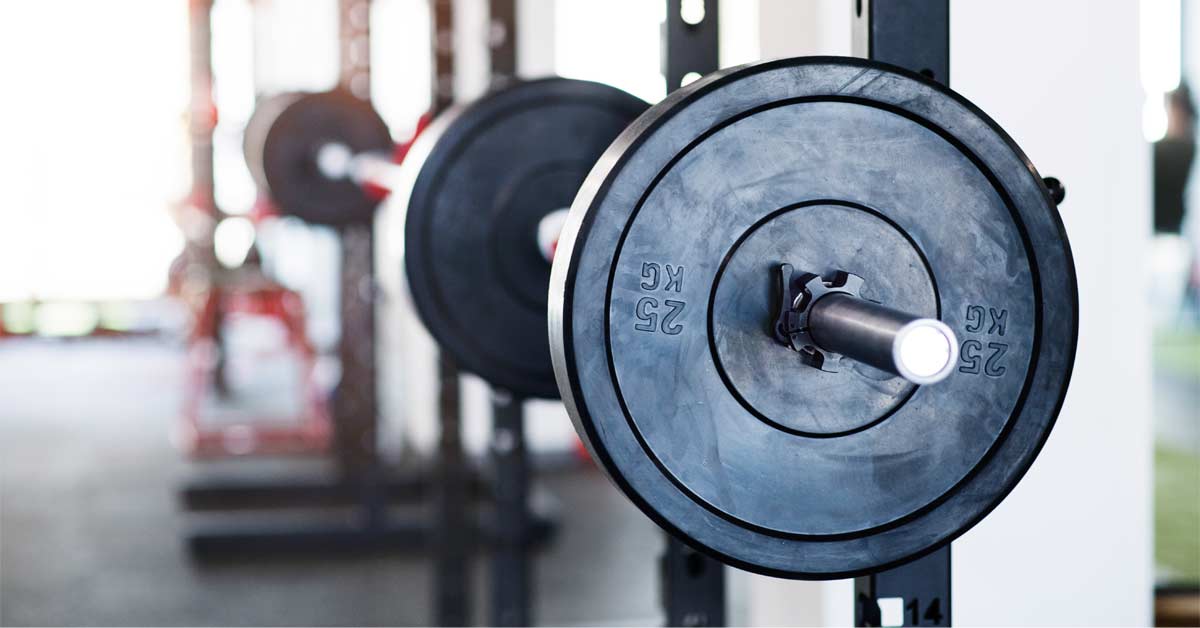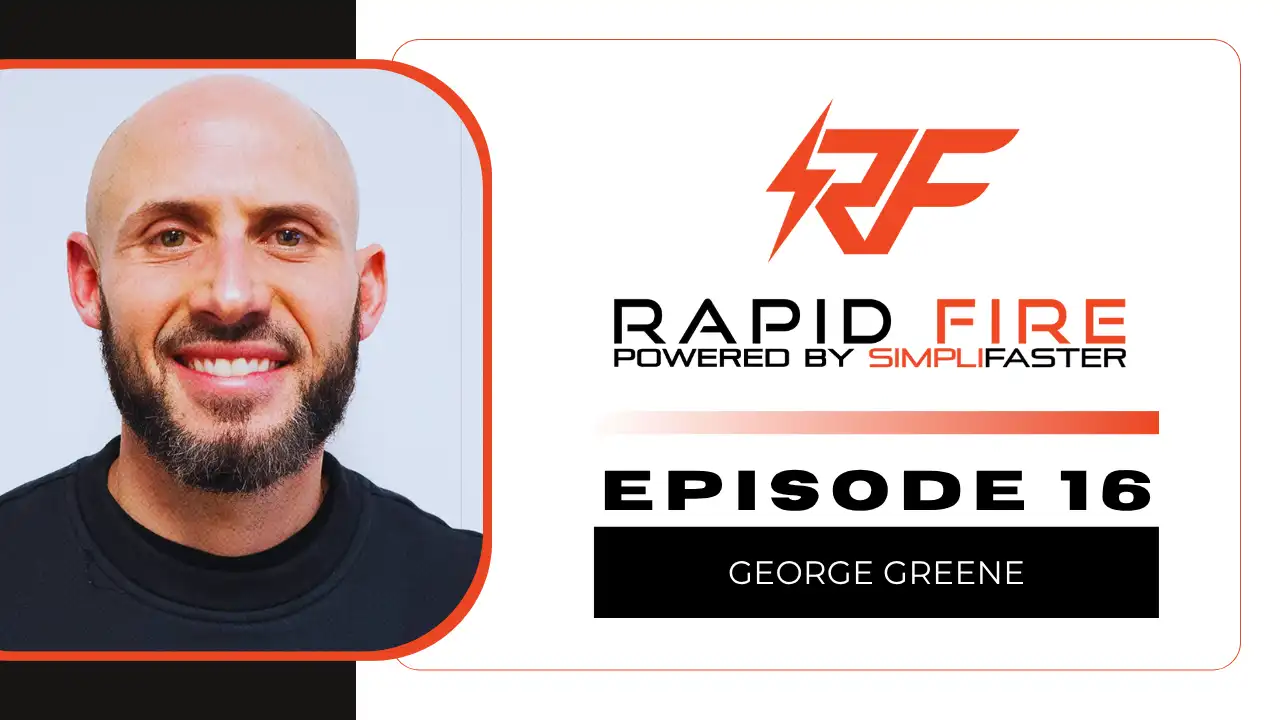[mashshare]

Strength and conditioning coaches at every level face challenges. While many of these challenges are similar across the board, from the professional ranks all the way down to high school and middle school, there are also challenges many of us do not share. Collective bargaining agreements in pro sports and strict “hours” rules in the NCAA can limit a strength coach’s contact time with athletes, while a high school strength coach may have 30–40 beginner level athletes training at one time, year-round.
Every strength and conditioning coach has a different reality that shapes their views on training and organization. I believe we can all agree that small group training and working one-on-one with athletes is a different animal than working with 30+ athletes in a strictly limited amount of time and space. The latter requires a strict adherence to basic training exercises and progressions. I get it. Basics can be boring. Repeated efforts at low-level progressions on the basics is boring. But, I ask, what is the goal?
This article will highlight many of the real day-to-day challenges faced in a high school weight room. As previously stated, everyone’s reality is different, and some of these challenges may resonate while others may not.
Are You Not Entertained?
Teenagers need to be engaged. One of the biggest challenges in the high school setting is keeping kids engaged in the training program. Creating “buy-in” takes many shapes. Take the baseball-only kid who has been told by everyone that bench pressing is bad. I could bore him with all my fancy information on how that is misguided and how there is no scientific proof that bench pressing will destroy his shoulder. Or I can create buy-in and let him do push-up variations and dumbbell bench presses. The kid instantly feels comfortable and is more likely to listen going forward.
In many sports where weight training has not been traditionally accepted, you run into kids who are only in the weight room because someone told them to be there. There is no intent on their part to physically improve, and they are merely following the herd. The sports where this is prevalent are also the sports where the head coach is usually out of sight, and where strength training is more of a suggestion than a requirement. These are the teams that cause the most frustration, so they usually get pushed down the scheduling pecking order. Athletes in these sports attend inconsistently at best. Because of that, their training program is very vanilla and has to remain basic.
While carnival tricks and unrealistic exercise variations are becoming popular, strength training should never be about entertainment, says @built_by_craig. Share on XCarnival tricks and unrealistic exercise variations are becoming popular and seem to draw a lot of attention. I suppose those would easily create more buy-in for me. But strength training should never be about entertainment. Time is limited, and high school athletes don’t train six days per week. If coaches run out of things to do, then it’s necessary for them to reexamine their training process. It is universally accepted that athletes need to sprint, jump, throw, push, pull, squat, and hinge. Basic training options are endless if you focus on those areas.
Exercise Performance Over Sport Performance
You can make an argument that strength training at the high school level is less about performance and transfer to sport and more about doing exercises correctly. Required physical education at the grade school level is dying out. Free play is becoming a thing of the past. Consequently, movement efficiency suffers, postural imbalances manifest, and overall general athleticism diminishes.
It is imperative to have a qualified strength and conditioning coach in the school teaching correct movement. Look at a child’s posture while they sit for 45 minutes at a time in class for 7+ hours per day. It’s a recipe for dysfunction. Add in the proliferation of the year-round club and travel ball scene, and you have little time for organized strength training.
We have many three-sport athletes in our school. Kids are perpetually “in season” year-round. A cross country runner who also plays basketball is at a disadvantage if weight training ceases the last three weeks of the cross country season. Use it or lose it—that athlete falls way down the physical capacity spectrum and actually begins to lose strength. Then they are asked to go from zero to 100 once basketball starts. Is it really a surprise that kids in that scenario pull up lame the first week of practice?
Bouncing from season to season requires a unified strength program across every sport in your school. Our training programs are nearly identical across all sports. This allows a smooth transition from one in-season plan to the next.
Social media is ripe with some neat exercise variations that make for a great selfie opportunity. I always ask, “How did you get to that (progression)?” and “How do you do that with 40 kids (practicality)?” Rarely, if ever, do we see actual athletes performing these variations in training. We talk about low force outputs when training in unstable positions or on unstable surfaces. If you are training to improve stability, then that’s great. But when strength is the goal, I prefer to pick exercises that allow the most weight to be lifted safely.
While variation may be a strategy to keep kids engaged, it can get out of hand. We are not trying to win the exercise variety Olympics. We may never progress past basic exercises like a front squat. If you have an athlete-centered program, then I believe your program allows enough flexibility to accommodate all stages of advancement.
While variation may be a strategy to keep kids engaged, it can get out of hand. We are not trying to win the exercise variety Olympics, says @built_by_craig. Share on XSome of my kids will train in an eight-week concentrated in-season block and then disappear for the rest of the year. Then—surprise!—they show up again for that eight-week in-season block. Their program remains the most basic of basics. That is a problem that needs to be fixed, but it happens quite often.
Be Like Dave Ramsey
When programming, I prefer to think like Dave Ramsey. His concept of the debt snowball—pouring resources into your smallest debt first—is to me an ideal way to approach training high school kids. After you pay off the smallest debt, you move your resources to the next debt and then the next, until you’re debt-free. This snowball effect allows you to increase variability in your training program because you knocked out your low-level debts first.
Pick your most basic debts (exercises) first, pour your resources (coaching/teaching) into mastering them, and then move your resources (progressions) to the next. Bodyweight Squat–>Goblet Squat–>Front Squat. Seems simple. Mastering an exercise like the bodyweight squat increases momentum into your next progression, and these can begin to stack upon each other.
Every Day Is an Evaluation
Screening every athlete in our program is not feasible. We discover orthopedic issues and real medical conditions through an athlete pre-participation physical. Bona fide movement screens, however, are not currently part of our program. Because of this, we have to make assumptions. These are not “grab-bag” assumptions. They are educated assumptions based on years of working with young athletes.
Need a quick “movement screen” that you can do in 20 seconds? Have your kids jog to one end of the gym and back. Be observant. What is the worst thing that can happen if you wrongly assume a kid should goblet squat instead of back squat first? This is a serious question.
Most, if not all, of the following should come as no surprise to most practitioners in the field. In general terms, most of the athletes I encounter possess the following:
- Low relative strength.
- Low work capacity.
- Pronounced knee valgus.
- Limited thoracic spine mobility.
- Limited low back/hamstring flexibility.
- Increased ankle eversion.
- Overloaded sport-specific skills.
- Anxiety about training.
- Poor communication skills.
- Poor nutrition and sleep habits.
Recognizing that these are common issues regardless of sport helps lay the foundation for all of our training programs. It is critical with the high school-age demographic that you place emphasis on improving exercise form. What is more important for a 14-year-old female soccer player who falls into all or most of the above? If athletes can improve in all of these areas, there is a good probability that sporting performance will improve as well.
A quick word on testing. Strength exercises are the easiest and most feasible testing means for me to employ. I can have coaches in the room to help. It’s simple. You either pressed the weight or you did not. I do not have a laser timing system and I have ONE Vertec. Accuracy with hand-timed sprints varies wildly when you have a number of coaches trying to help, so currently I do not test speed and agility. I would like to, but validity and reliability would come into question.
Our strength testing battery varies from sport to sport. Our teams and athletes who train the most consistently are able to have more testing opportunities versus teams that only train in small concentrated blocks throughout the school year. Kids struggling with push-ups and chin-ups are not a high strength testing priority.
Linear Periodization Is Not Dead
Progressive overload works. Athletes need hundreds of repetitions, quite possibly more, to become competent enough to be trusted. For many, attendance is intermittent, which requires a very vanilla loading approach. The truth of the matter is that most high school athletes will not reach elite status in the weight room or in their chosen sport.
Of course, there are a handful every year across all of our sports who move on and play at a higher level. It just so happens that those are also the kids who have devoted ample time to physical improvement, in conjunction with their technical and tactical training, through organized weight training and conditioning. Consistently increasing (and decreasing) training load week to week, month to month, and year to year will yield the highest results. Think of it as a slow cook.
Too many people think we have to fit four years of training into the first six weeks of freshman year, says @built_by_craig. Share on XI like to use percentages as a guide for our older kids who actually have established a 1RM. All first-year athletes are in our development program for months before we approach an appreciable load on our main movements. It’s a guessing game initially with those kids, but who cares? Show me proficiency with a 15-pound training bar. Then 20 pounds. Then 25 pounds, and so on. Too many people think we have to fit four years of training into the first six weeks of freshman year because “I play baseball” or “my club coach needs me ready for spring.” No offense, but I do not work for your club team.
Logistics Can Hurt
Facility limitations are a factor when designing programs and selecting exercise progressions. We are the only Catholic high school in our county. Our school day is 7:30 a.m.–2:30 p.m. We have kids who commute 30–40 minutes one way to get to our building every day. We currently do not offer a weight training or strength and conditioning class as part of our curriculum. That leaves for a tight window after school to get all of our first-year developmental kids, in-season sports, and off-season sports through their training programs.
After-school training sessions can be quite crowded because, if we ask a kid to wait two hours before they start training, there is a good chance that kid will just leave and go home. As a consequence, I have to try and get as many kids in at one time or risk losing them to go off and train elsewhere, usually unsupervised. Mom’s Orange Theory class does not count as training.
Safe and effective programming is critical, and it trumps anything that may be intrinsically rewarding to an athlete, says @built_by_craig. Share on XSafe and effective programming is critical and trumps anything that may be intrinsically rewarding to an athlete. Before school is an option, but it is usually only reserved for teams with a strong attendance record and, quite frankly, a strong culture and commitment to the weight room. I am an advocate for sleep and recovery, but the reality of our situation requires some teams to have early morning training sessions. I have nothing but anecdotal evidence to support this, but thus far we have not created any Walking Dead zombies or witnessed a decrease in academic performance because of once-a-week early morning lifts.
We offer 16 sports and within many of those sports are separate freshman, junior varsity (JV), and varsity rosters. Of those 16, only five practice on our campus, so getting kids back and forth from practices to the building for training becomes a challenge. Some practices are a 20- to 30-minute drive from the main building. Asking parents to get their kid back to lifting at 6:30 p.m. for 30–45 minutes and then to commute 40 minutes home is a tough order.
I have had parents tell me point-blank that if their kid does not train right after school, then they won’t bring them back later. It’s a difficult situation with not many realistic solutions. Some coaches make it optional for the kid to return and lift after practice. Some kids do and some do not. Each sport is different. It’s not ideal, but it’s real.
We are fortunate to have two full-sized practice basketball/volleyball courts in addition to our main competition floor. This facility is great for large group warm-ups and speed and agility sessions. We can transition easily into the weight room from there. However, when lightning strikes, literally, the football team is moved inside to the practice gym and our warm-up and speed space is gone. The speed program takes a hit that day because of space.
On a one-off basis, you can live with it. You adapt. But there are too many reasons to list in this article why, on short notice, the training space can be eliminated, and we’re left with figuring out how to get 30 kids in and out before the next group. At times, the program becomes disjointed.
Compressed game schedules make in-season training very difficult. Our volleyball programs play 16 regular season games over the course of five weeks. Training time is reduced to once a week. The decision then has to be made to continue progressive weight training or focus on recovery.
Combine poor sleep and nutrition habits, and I am not sure that “recovery” sessions implemented by the strength coach are all that effective, especially when there is a practice immediately afterward. The argument can be made that the strength training will not be all that effective either. At least with the strength training, there is a stimulus present that can help drive some form of adaptation, even if it is not the most optimal.
Working with Coaches and Parents
While working at the college level, my interaction with parents was usually limited to recruiting visits, an occasional home game, and prolonged road trips when we were in the same place for a number of days for a game or tournament. We were dealing with young adults and, for the most part, parents did not try to speak and/or answer for their kids.
High school is different. At every school function there is interaction with parents. Our school hosts many fundraisers and social gatherings throughout the school year, and parents cannot wait to speak to me about their child, both good and bad. It is a delicate balancing act of being honest about kids with their parents without being disrespectful. I try to avoid most conversations about kids at these types of events to save myself the trouble of upsetting someone.
At this age, kids barely learn how to effectively communicate on their own behalf. Seriously, you just found out today that you are leaving after school for a 10-day family vacation? Some parents are great about advocating for their child to open the lines of communication, while other parents would rather handle it all themselves. As coaches, we also have to work with kids to develop their verbal communication skills. It goes beyond asking “how do you feel today?” I often tactfully answer parents’ emails and explain to them that their child needs to communicate directly with me.
The real challenge is helping parents to understand where their child is “right now” on the physical capacity spectrum. Unfortunately, that is a reality that is difficult for parents to grasp. If they have their minds already made up, no amount of information or advice you give them will sway their opinion. Tell a parent why their kid should take the club season off. The reaction will probably not be a positive one.
The “more is better” mindset is prevalent, and you end up with kids who show little to no improvement. The truth of the matter is that kids and parents will choose a club/travel team over a high school team nearly 100% of the time. We have kids miss varsity games to attend club team games, tournaments, and practices. It’s delicate, and since these are teenagers, their parents, rightfully, have the final say.
The truth of the matter is that kids and parents will choose a club/travel team over a high school team nearly 100% of the time, says @built_by_craig. Share on XMy experience working with high school sport coaches has been tremendous. They are glad to not have to worry about designing their own lifting and conditioning programs. A full-time strength coach is a luxury for any coach, as it takes an item off their plate that, truthfully, many of them are not comfortable with to start.
Education is a big piece of this, and it is definitely a challenge. In terms of training, coaches are like many consumers who read the latest fitness trends and equate that as being the same as an organized strength program. Old dogmas are prevalent and the “we did this when I played” mantra is alive and well. Apparently, all of our 500-pound squatters graduated before I got here.
Increased 1RMs are the easiest way for coaches to see improvement, so the difficulty is in showing how chasing numbers in the weight room does not necessarily transfer to sporting performance on the field. Sure, strength matters and we always want to improve it. It looks great during the lift-a-thon at the end of the summer. But improvements in range of motion and sprint ability are not sexy.
At the college level, it was pretty much “keep your coaches happy” or you’d either be reassigned or lose your job. It is not like that here. Our coaches are not coaching as their primary source of income, and there is definitely an increased level of respect for what I do from the coaches I work with. I work hard to keep them happy, and they are respectful of the job I do. I consider myself a resource for them and dialogue is easy.
A big difference is that, as the strength coach, I have to work with the good and the bad. A sport coach can take a bad player and set them on the bench or put them at the back of a drill and forget about them. In the weight room, I cannot hide players like that, and they deserve the same level of coaching I would give to an all-star.
Having administrative support is also critical to the success of the strength and conditioning program. Being a full-time strength coach at a school our size shows that our school administration and coaches are committed to kids first. My vision for the strength program aligns with our school mission. When in doubt, I can always go back to what our mission is as a school to re-center myself.
Don’t Worry – The Kids Are Alright
Working with teens is rewarding, fulfilling, and downright fun. It is also frustrating. All at the same time. Kids will skip. Kids will make poor decisions. Kids will lie. They will miss lifting for the most mundane of reasons. It has taken me a while to realize that doctor’s appointments, apparently, can only be made during one of the two scheduled training times kids have for the week. Oh, and that it is impossible to change the appointment time.
The reality of a quick four years of high school means that they do need some constants. Strength coaches can be a steady, constant presence in an otherwise chaotic and socially distorted world for teenagers. They need structure. They need steady. Kids need mentors. Kids are very malleable at this age, and we have to nurture the good and the bad. We all want to win. But what is winning if your kids have no respect for themselves or for others?
High school strength coaches can be a steady, constant presence in an otherwise chaotic and socially distorted world for teenagers, says @built_by_craig. Share on XI believe our job is to provide an environment where they are set up to succeed and fail. A place for leadership development. A place for accountability. Without failure there is no growth.
The strength program should be no different than any other learning environment. We cannot complain about lack of leadership if we don’t do anything to teach kids how to lead. You would have to look far and wide to find a high school freshman who naturally displays what you want in leadership. We cannot complain about the lack of accountability if we don’t teach kids what that actually looks like. Working with young people is a huge responsibility, and it is on us to provide the tools and structure to help them succeed and surpass anything we could have imagined.
Since you’re here…
…we have a small favor to ask. More people are reading SimpliFaster than ever, and each week we bring you compelling content from coaches, sport scientists, and physiotherapists who are devoted to building better athletes. Please take a moment to share the articles on social media, engage the authors with questions and comments below, and link to articles when appropriate if you have a blog or participate on forums of related topics. — SF
[mashshare]




